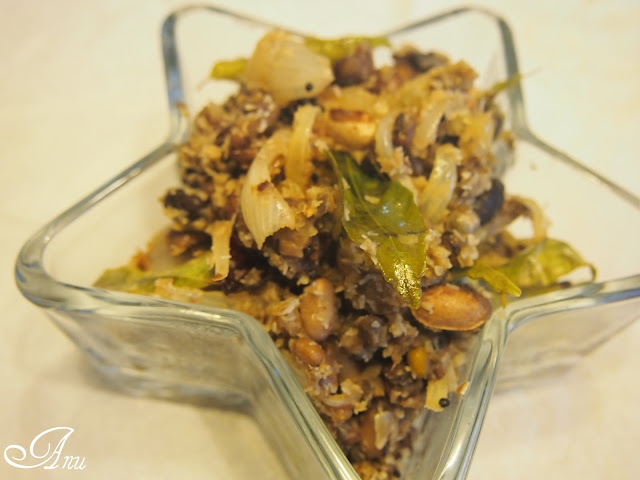Navarathri is a festival dedicated to the worship of a Hindu deity Shakti. The word "Navarathri: literally means nine nights in Sanskrit, "nava" meaning nine and "ratri" meaning nights. During these nine nights and ten days, nine forms of Shakti/Devi are worshiped. The 10th day is commonly referred to as "Vijayadashmi" or "Dussehra".

Navratri is a very important and major festival in the state of Gujarat and Mumbai, where during all these days the traditional dance of Gujarat called "Garba" si been performed by everyone.
In South India, it is customary in the states of Tamil Nade, Kerala, Andhra Pradesh and Karnataka, to display a "Kolu" (also Golu, or Bombe Habba or Bommai Kolu or Bommala Koluvu). This is an exibition of various idols and dolls and figurines in odd (USually, 7.9 or 11) numbered tiers ("padis").
Significance:
-------------
The Significance of this festive eve, is the beginning of Spring and the beginning of Autumn are two very important junctions of climatic and solar influence. These two periods are taken as scared oppurtunities for the worship of the Divine Mother Durga. The dates of the festival are determined according to the Lunar Calendar.
Navarathri represents celebration of Goddess Durga, the manifestation of Deity in the form of Shakti [Energy or Powder]. The Navarathri festival or "Nine Nights Festival" becomes 'ten days festival' with the addition of the last day, Vijayadashami which is its culmination. On all these ten days, the various forms of Mother Mahisasura-mardini (Durga) are worshiped with fervor and devotion.
Tradition:
----------
Navarathri is celebrated five times a year. They are Vasanta Navaratri, Ashadha Navaratri, the Sharada Navaratri, and the Paush/Magha Navaratri. Of these, the Sharada Navaratri of the month of Puratashi and the Vasanta Navaratri of the Vasanta kala are very important.
1. Vasanta Navaratri: Basanta Navaratri, also known as Vasant Navaratri, is the festival of nine days dedicated to the nine forms of Shakti (Mother Goddess) in the spring season (March–April). It is also known as Chaitra Navaratri. The nine days of festival is also known as Raama Navratri.
2. Gupta Navaratri: Gupta Navaratri, also referred as Ashadha or Gayatri or Shakambhari Navaratri, is nine days dedicated to the nine forms of Shakti (Mother Goddess) in the month of Ashadha (June–July). Gupta Navaratri is observed during the Ashadha Shukla Paksha (waxing phase of moon).
3. Sharada Navaratri: This is the most important of the Navaratris. It is simply called Maha Navaratri (the Great Navratri) and is celebrated in the month of Ashvina. Also known as Sharad Navaratri, as it is celebrated during Sharad (beginning of winter, September–October).
4. Paush Navaratri: Paush Navaratri is nine days dedicated to the nine forms of Shakti (Mother Goddess) in the month of Paush (December–January). Paush Navaratri is observed during the Paush Shukla Paksha (waxing phase of moon).
5. Magha Navaratri: Magha Navaratri, also referred as Gupta Navaratri, is nine days dedicated to the nine forms of Shakti (Mother Goddess) in the month of Magha (January–February). Magha Navaratri is observed during the Magha Shukla Paksha (waxing phase of moon).
Forms of Shakti:
----------------
* Durga, the inaccessible one
* Bhadrakali
* Amba or Jagadamba, Mother of the universe
* Annapoorna Devi, the one who bestows grains (anna) in plenty
* Sarvamangala, the one who gives joy (mangal) to all (sarva)
* Bhairavi
* Chandika or Chandi
* Lalita
* Bhavani
* Mookambika
Nine Days:
----------
First Three Days: The goddess is seperated as a spiritual force called Durga also known as Kali in order to destroy all our impurities.
Second Three Days: The Mother is adored as a giver of spiritual wealth, Lakshmi, who is considered to have the power of bestowing on her devotes inexhaustible wealth, as she is the goddess of wealth.
Final Three Days: The final se of three days is spend worshiping the goddess of wisdom, Saraswathi. In order to have all-round success in life, believers seek the blessings of all the three aspects of the divine femininity, hence the nine nights of worship.
Method:
-------
1. Wash and Soak all the beans in just enough hot water for an hour.
2. Add these beans into a pressure cooker and cook it for two whistles, off the flame and let it rest for few mins until the pressure is gone.
Note: If you add right amount of water after you pressure cook, there will be no water at the bottom of the pressure cooker, else you will have to dry it out or strain the excess water.
3. In a pan add oil, when it's hot enough add mustard seeds, when they start to sputter add asafoetida and curry leaves and dry red chilies.
4. Now add the sliced onions, chopped ginger and garlic, saute it until onions are translucent, now add enough salt and grated coconut and off the flame.
5. Mix the seasoning to the cooked lentils gently and add more salt if needed.
 |  |  |
| Black Chick Pea Sundal | Broken Wheat Kheer | Festive Recipes |














